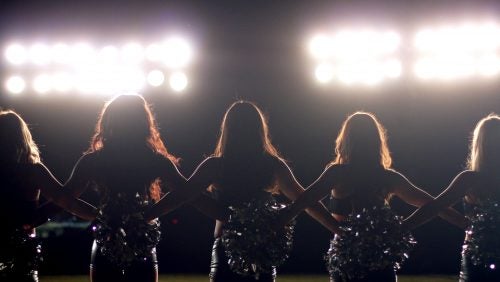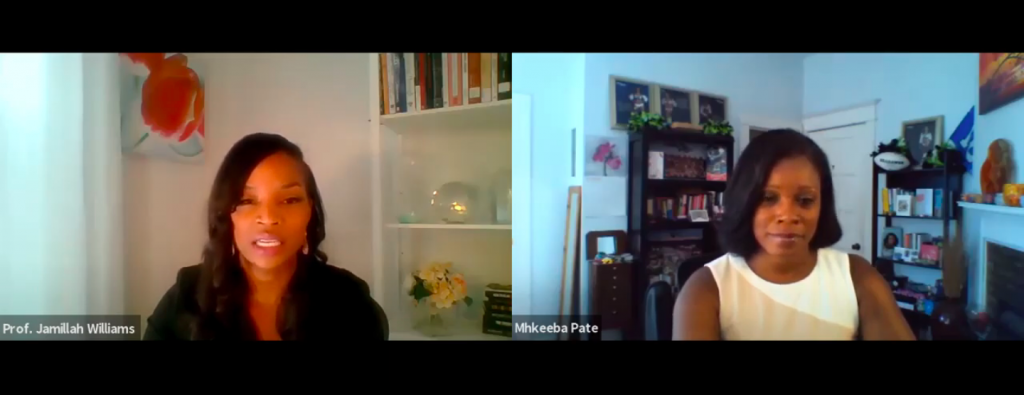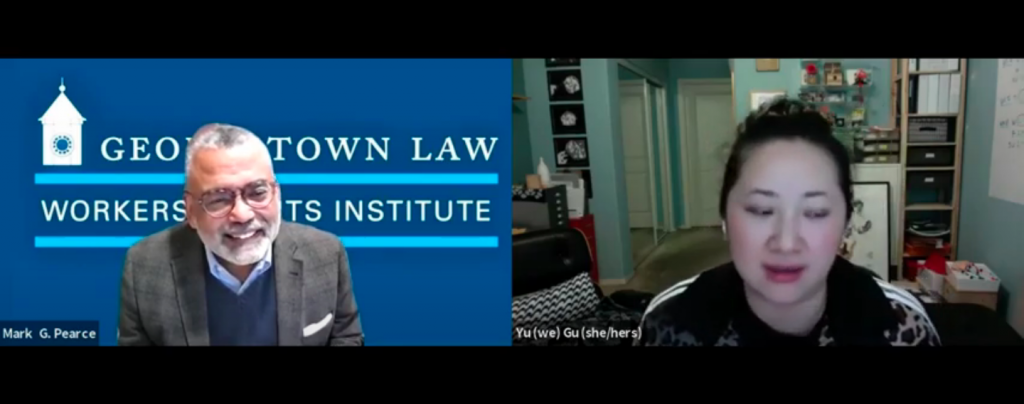Worker’s Rights Institute Highlights NFL Cheerleaders’ Labor Struggles
March 18, 2021

Image from the documentary “A Woman's Work: The NFL’s Cheerleader Problem."
On the sidelines and during halftime performances, cheerleading for the Baltimore Ravens was the pinnacle of Amanda Ross’s career in cheerleading.
But the glamour ended as soon as the game was over. Parking for cheerleaders was a small but symbolic example of their position in the football hierarchy.
“We didn’t have parking at the stadium, we would have to carry our suitcases that say ‘cheerleaders’ through the street,” she said. “Some of my teammates had their uniforms stolen, it can be a huge safety concern especially when alcohol is involved and fans are drinking the entire time.”
The fight for cheerleaders’ labor rights was the focus of a panel discussing the documentary “A Woman’s Work: The NFL’s Cheerleader Problem,” hosted by Georgetown Law’s Workers’ Rights Institute. The discussion was moderated by the Institue’s Executive Director Mark Gaston Pearce, who formerly served as chair of the National Labor Relations Board, and Associate Professor Jamillah Bowman Williams, an expert in workplace discrimination and contemporary bias who is the Institute’s faculty director.
“The NFL is among the world’s most lucrative sports and cheerleaders are ambassadors to the teams,” Pearce said. “ But behind the glamour and glitz these are low wage workers fighting for fairness. Cheerleaders face unfair and often unlawful working conditions including sex discrimination, sexual harassment and wage theft just to mention a few.”
Launched in 2019 The Workers’ Rights Institute organizes legal and policy initiatives that raise standards and works to empower the nation’s most vulnerable workers.
The panel featured former NFL cheerleaders Ross and Mhkeeba Pate (C’00), filmmaker Yu Gu, and Sean Cooney, a lawyer representing former members of the Buffalo Jills cheerleading squad in a class action lawsuit against the Buffalo Bills.

Professor Jamillah Bowman Williams and Mhkeeba Pate (C’00).
NFL cheerleaders have filed a number of lawsuits in recent years, alleging that they were paid far below minimum wage, not compensated for required activities like practices and public appearances, and forced to spend thousands of dollars on required uniforms and beauty routines. The film focused on “Lacy T.,” a former Raiderette, who sparked the wave of lawsuits when she sued the Oakland Raiders in 2014 for wage theft and illegal employment practices.
“Attitude of Gratitude”
The film also highlighted issues beyond cheerleading, such as the uncompensated labor that women do at home, and included a scene where one cheerleader’s husband complained about babysitting his own children.
“I wanted to examine the unfair labor practices and work conditions of the NFL cheerleaders with how women in general are treated across society and across different industries,” said Yu, who produced and directed the film. “Part of the reason this has persisted for so long is those social norms that women’s work is not valued.”

WRI Executive Director Mark Gaston Pearce and filmmaker Yu Gu.
The NFL is a male dominated workplace. The league received a C grade for gender diversity in 2020 from the Institute for Diversity and Ethics in Sport at the University of Central Florida.
Cheerleaders are constantly reminded that there were hundreds of other women ready to take their place and that they need to have an “attitude of gratitude” for the opportunity, the panel said. Pate, a former Seattle Seahawks cheerleader, lawyer and now host of the Pro Cheerleader Podcast said the environment discouraged most cheerleaders from speaking up.
“You are making a choice between pursuing your passion and just shutting up and dealing with it, or putting a mark on yourself and maybe getting blacklisted,” said Pate. “With my legal background I asked a lot of questions and maybe that is why I wasn’t invited back.”
The only Black cheerleader at the time she was cut, Pate rejoined the squad a year later after re-auditioning — which all cheerleaders are required to do each year.
Who is the Boss?
In representing the Buffalo Jills, Sean Cooney’s first challenge was proving that they were in fact employed by the Bills. The franchise argued because the cheerleaders had signed a contract that they were employed by a local radio station and production company, the Bills and the NFL were not appropriate defendants.
No matter what the contract says, a legal test for who someone’s employer is turns on the amount of control the alleged employer exerts over an employees actions. Cooney argued that the Jills, like all NFL Cheerleaders, are extensively controlled by the NFL teams, citing rules that govern what they are allowed to post on their personal social media accounts and what color lipstick they wear for appearances.
“The NFL was clearly benefiting from the work of these women but they weren’t willing to ensure they were being paid a lawful or decent wage,” he said. “Those original contracts we knew were unenforceable and illegal,” he said.
Cooney and the Jills won this employment classification argument in New York State Court and as of March 2021 the case is still being litigated. The Bills responded to the lawsuit by suspending their cheerleading program in 2014 and it has yet to be restarted.
A Cheerleaders Union
Ross said that during her time with the Ravens the working conditions improved.
“At the time, I didn’t realize it was because of the lawsuits,” she said. “It wasn’t until afterwards I put two and two together.”
However, all of the panelists agreed that the structural solution for cheerleaders was a league-wide union just like players are represented by the NFL Players Association. Pate has been active in calling for a union on her podcast and Ross is working to organize cheerleaders with the AFL-CIO. Pearce cited the PRO Act that was recently passed by the House of Representatives as legislation that could protect and promote union organizing among cheerleaders.
“Right now around the country, while union density hasn’t changed, there is a sentiment that favors union organizing among the American public,” he said. “Maybe that kind of mentality, understanding and orientation will be helpful in cheerleaders understanding that banding together is what is going to give them a little bit of strength.”
Watch the panel discussion below: